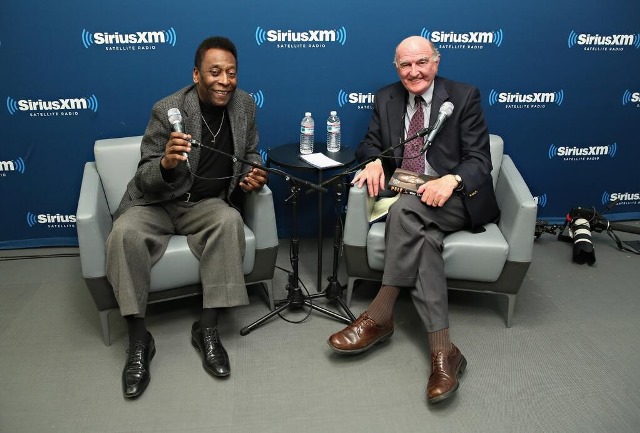Seamus Malin
 I’m a long way from my working days at Harvard University and doing the color commentary for the New York Cosmos. But there’s one thing that does not seem to be far away — and that’s my commitment to be with some of the greatest players in the history of the game at the NASL’s 50th anniversary event in Frisco, Tex., in October. I hope you can join us for what promises to be a great weekend.
I’m a long way from my working days at Harvard University and doing the color commentary for the New York Cosmos. But there’s one thing that does not seem to be far away — and that’s my commitment to be with some of the greatest players in the history of the game at the NASL’s 50th anniversary event in Frisco, Tex., in October. I hope you can join us for what promises to be a great weekend.
Seamus Malin was getting ready to leave for his favorite Santa Fe, N.M., sports bar turned soccer bar to catch the recent Juventus-Real Madrid UEFA Champions League match. After moving from Ireland to the U.S. in 1958 and settling in the Boston area, Malin’s life has revolved around soccer. Yes, another soccer lifer.
But while he jetted down to the New York area from Boston to call Cosmos games with the unforgettable Jim Karvellas, Malin kept an impressive day job over the years. Over a 40-year career at Harvard he was the assistant dean of undergraduate admissions, director of financial aid, director of Harvard’s international student office and finally the director of admissions at the graduate school of theology.
His career behind the microphone was the classic “when one door closed and another opened,” he said.
Malin was doing radio work for the Boston Minutemen when the club was bought by the Lipton Tea Company. The name was changed to the New England Teamen and the club opted to play its game in Foxborough, sharing a stadium with the Patriots.
“One of the Lipton executives, Derek Carroll, another Irishman, said they were going to do some TV and he’d give me a call,” Malin said. “I got the call saying he was sorry but there was pressure to use the Patriots’ kicker, John Smith, a good guy who knew little about soccer. But he sounded authentic.”
The Carroll connection, however, was not without an eventual benefit. At a meeting of league officials in New York in 1978, Malin said that Carroll told Cosmos executive Tom Werblin about Malin. That led to a lunch, which led to a job.
“So many things stand out,” Malin said. “One was the summer of 1980 when we had something like six home games in the Meadowlands, all with attendances over 70,000. Karvo and I just looked out each time and we had to pinch ourselves. This couldn’t be happening. New Yorkers love winners, the large immigrant population was craving a team that was worth talking about. The Tony Meolas, John Harkes and Tab Ramoses of the world, in the stands as teenagers, were thrilled they had a terrific team. To witness this connection — the international crowd and up and coming suburbanites — now we’re seeing how that developed.”
He added: “Another thing was the amazing access that writers and broadcasters had to the players. It was a new thing for them because in Europe the players never spoke to anyone. The players spoke freely and it was refreshing and terrific. Writers used to tell me that they could never get as close to the Knicks, Giants or Rangers as they did with the Cosmos.
“And finally the characters, great characters. I remember one game at Giants Stadium. Giorgio [Chinaglia] had hit the post three times and the Cosmos lost, 1-0. I was sitting in the locker room next to Bogie [Vladislav Bogievic] and asked him how to explain the loss. He took the cigarette out of his face and said: ‘You know Seamus, sometimes the ball, she turns her back on you.’ ”
For Malin, the “saddest thing was that the league was built on sand, from top down. When the top wavered, the building collapsed.”